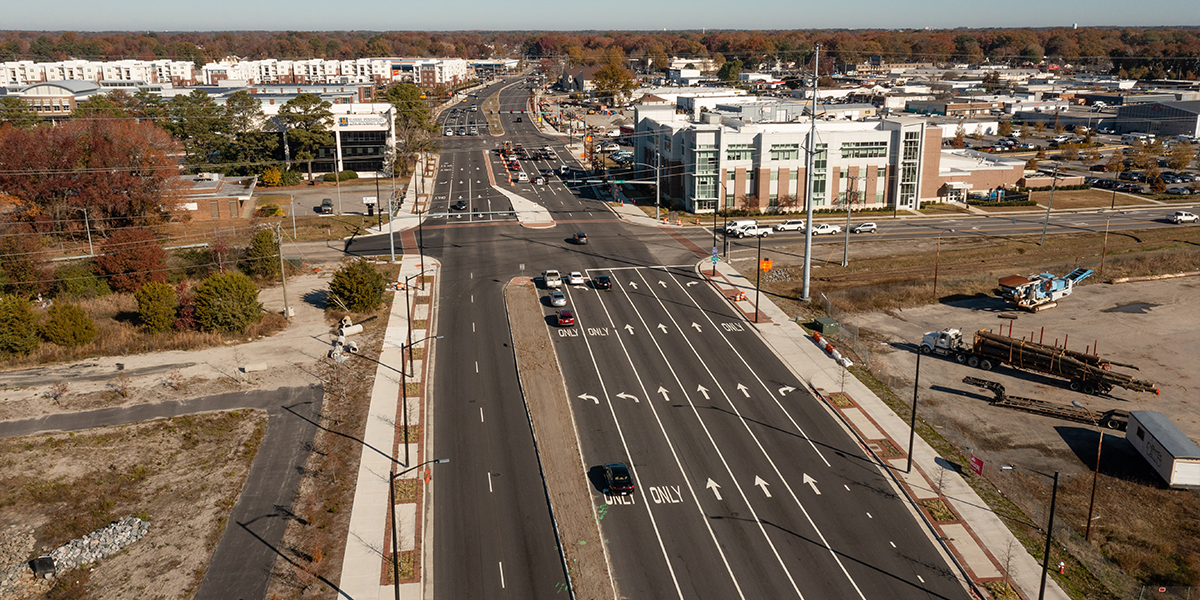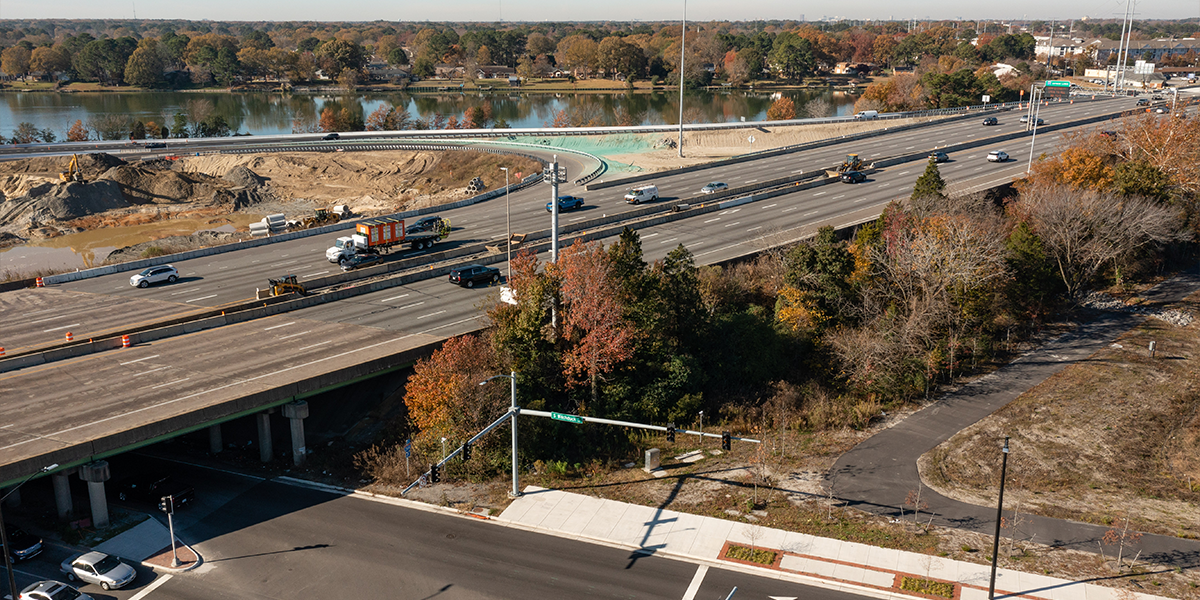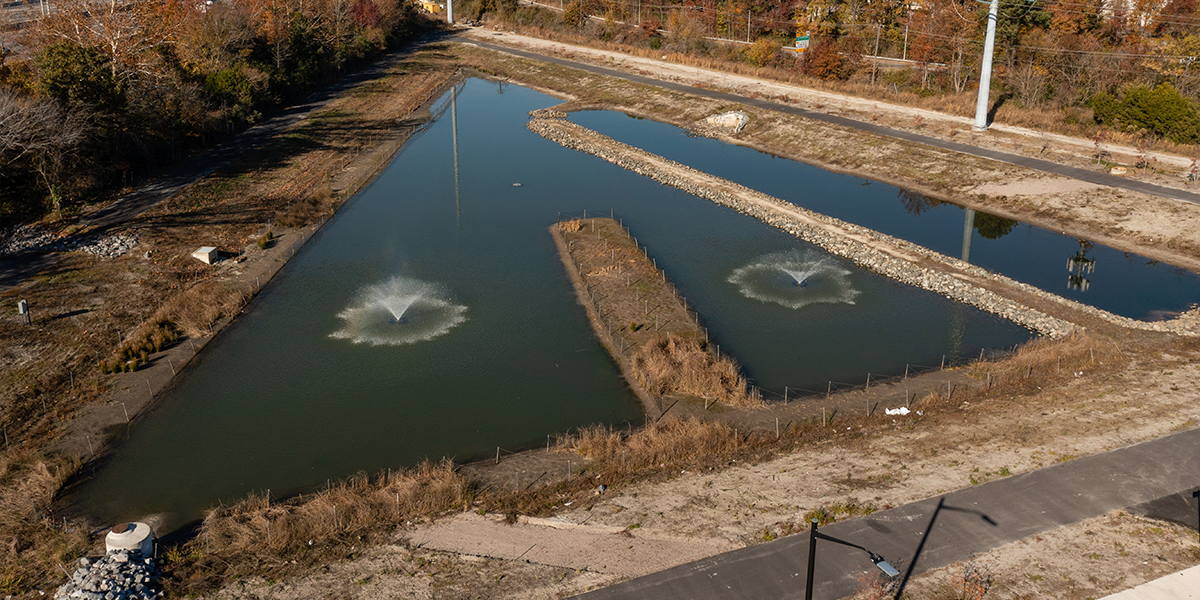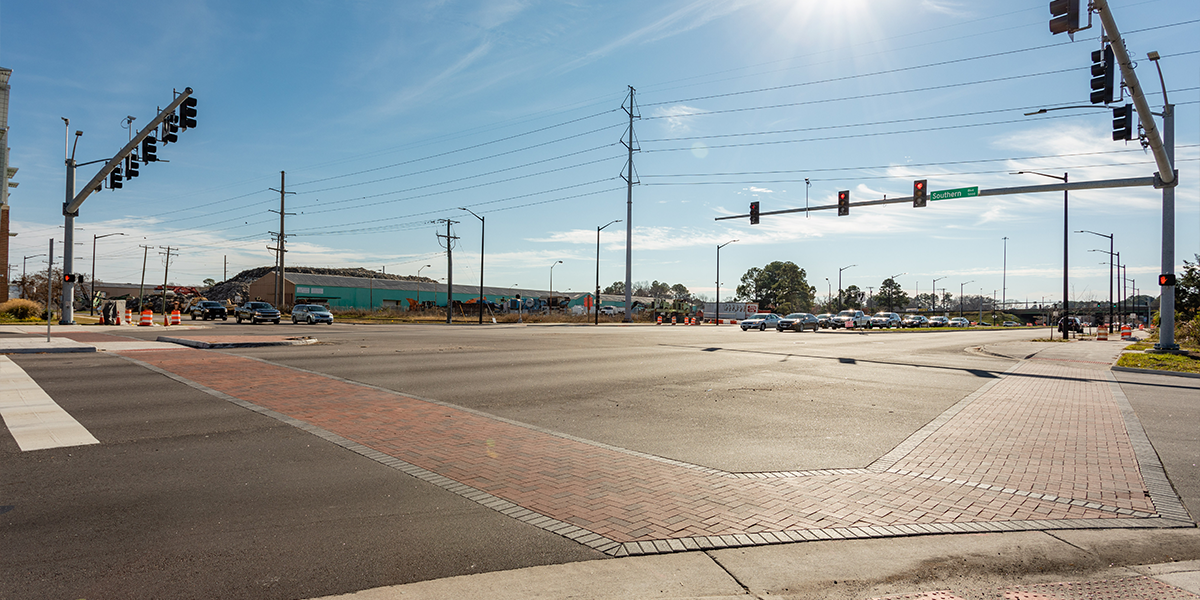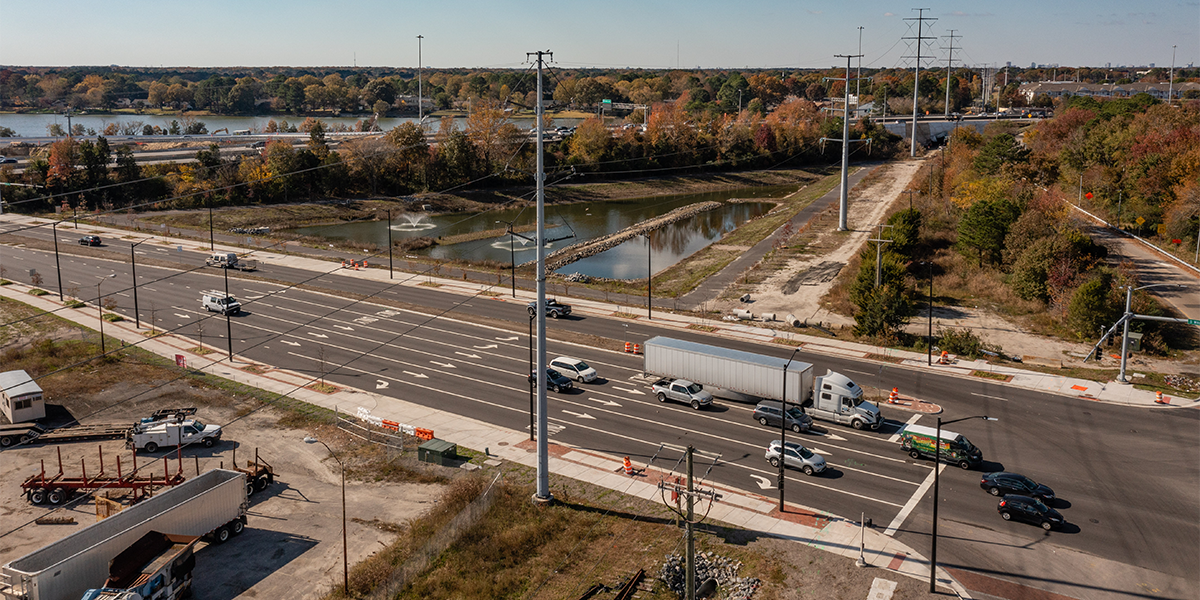Witchduck Road Expansion Phase II
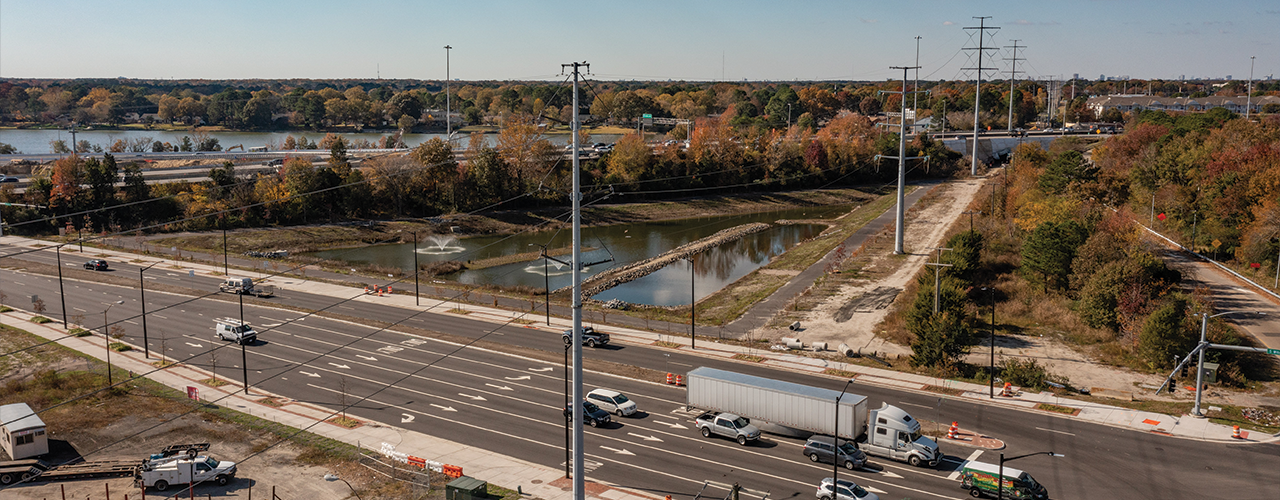
Background
Witchduck Road is a major artery between Virginia Beach Boulevard and I-264. The city of Virginia Beach planned for an expansion of the roadway to improve both traffic flow and overall safety.
Challenge
Accommodating traffic flow involved widening Witchduck Road from four to six lanes, including widened outside lanes for bicycle traffic, streetscaping and improved pedestrian facilities. The roadway provides a vital link for the community, connecting I-264 and Virginia Beach Boulevard; traffic had to be maintained at all times. In addition, the city desired all utilities to be relocated underground, which required a major effort among all utility stakeholders.
Solution
Woolpert provided multiple services for this project, from preliminary engineering through construction administration. The project team collected existing traffic data and collaborated with the Hampton Roads Planning District Commission to project 2028 traffic volumes. These preliminary efforts determined that Witchduck Road needed the following changes:
- Roadway widened to six lanes
- Number of intersections reduced
- Traffic signal system updated
- Pedestrian and bicycle facilities improved for the community, including access to the Housing Resource Center
Woolpert worked with the city and other stakeholders to develop and analyze four different alternatives for the reconstruction of Witchduck Road. The preferred alternative widened the road to six lanes, eliminated multiple intersections, and modified traffic patterns to improve traffic flow along Witchduck Road. Southern Boulevard was realigned to create a signalized intersection at the I-264 on-ramp, and a new road was designed to connect Mac and Price Streets to Southern Boulevard. These improvements required significant right-of-way acquisition and utility relocation. Extensive utility coordination efforts, including a meeting of all utility owners at Woolpert’s Chesapeake office, reduced conflicts and scheduling issues during construction when the existing utilities were relocated into the underground duct bank.
The reconstruction and widening of Witchduck Road required modification of the existing dual-trunk storm sewer system and construction of a regional BMP. Woolpert’s national experts assisted the city through this process; the properties on the west side of Witchduck Road were purchased for the creation of the regional BMP. The large BMP improved existing stormwater runoff conditions and prevented reconstruction of the existing system.
Additional tasks included evaluating existing pavements, installing curbs and gutters, modifying the sanitary sewer system, relocating water mains, designing street lighting, providing extensive temporary traffic control, modifying a parking lot and landscaping.
Outcome
The project provided the necessary reconstructions and additions to accommodate additional traffic flow along Witchduck Road, which is critical to the regional transportation network as a result of the I-264 flyover ramp that connects Greenwich Road to Cleveland Street. These improvements also provide easier access to the Housing Resource Center.
Benefits
The reconstruction of the Witchduck corridor provides Virginia Beach with a roadway capable of handling a large volume of traffic. With sidewalks and streetscape features, the corridor has a fresh, appealing look. The project was completed before the Virginia Department of Transportation opened the Cleveland Street Flyover Ramp.
